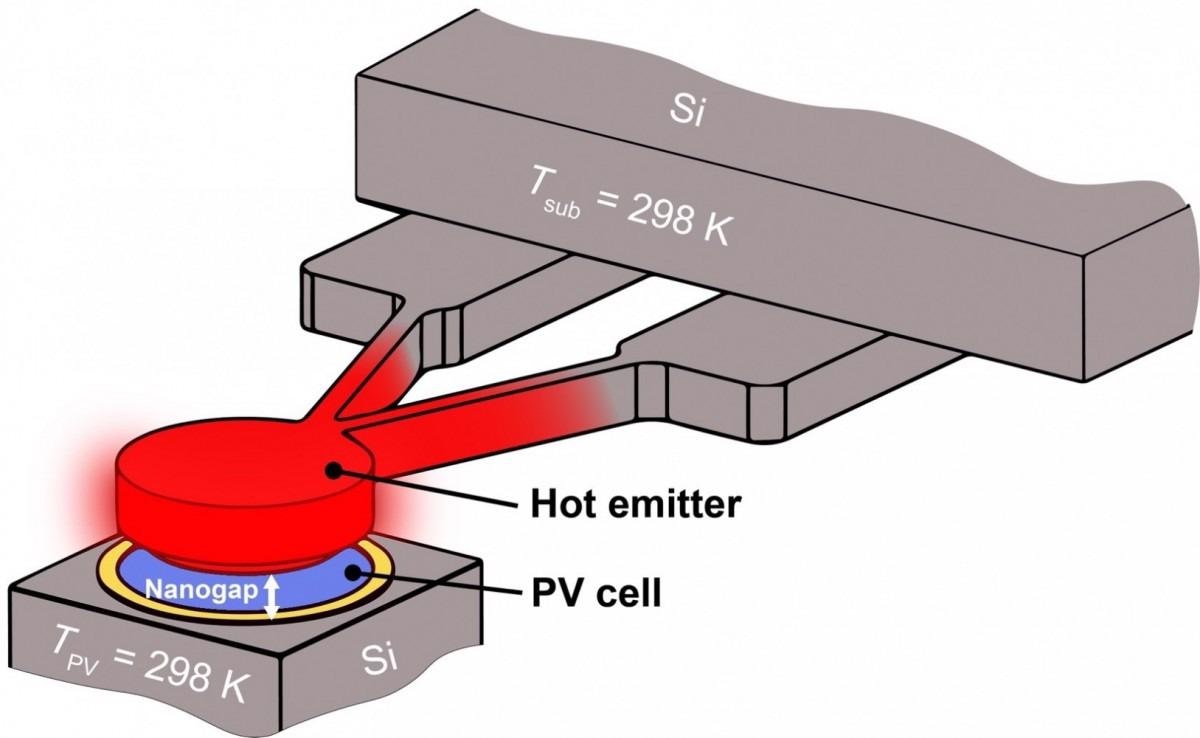Reviewed by Alex SmithAug 31 2021
The provision of lightweight portable power has become more difficult with the inclusion of sensors and advanced communication tools.
 Army-funded research demonstrates a new approach to turning thermal energy into electricity that could provide compact and efficient power for Soldiers on the battlefield. Image Credit: University of Michigan.
Army-funded research demonstrates a new approach to turning thermal energy into electricity that could provide compact and efficient power for Soldiers on the battlefield. Image Credit: University of Michigan.
Research funded by the U.S. Army has developed a new approach with the potential to convert thermal energy into electricity. This can offer compact and efficient power for soldiers on future battlefields.
Light is radiated in the form of photons into the atmosphere by hot objects. It is possible to capture the emitted photons using photovoltaic cells and convert them into useful electric energy.
This energy conversion technique is called far-field thermophotovoltaics or FF-TPVs. Even after being under development for several years, it has challenges like low-power density and, therefore, needs a high operating temperature of the emitter.
Research undertaken at the University of Michigan presents a new method, which lowers the separation between the emitter and the photovoltaic cell to the nanoscale. This facilitates a much higher power output than what is possible with FF-TPVs for the same emitter temperature.
The research was published in the journal Nature Communications.
The method that enables capturing energy that is otherwise trapped in the near field of the emitter is known as near-field thermophotovoltaics or NF-TPV. This method employs custom-built photovoltaic cells and emitter designs ideal for near-field operating conditions.
According to Dr. Edgar Meyhofer, professor of mechanical engineering at the University of Michigan, this method has shown a power density almost an order of magnitude more than that for the best-reported NF-TPV systems. This also simultaneously operates six times more efficiently, leading to future NF-TPV applications.
The Army uses large amounts of power during deployments and battlefield operations and must be carried by the Soldier or a weight constrained system. If successful, in the future near-field-TPVs could serve as more compact and higher efficiency power sources for Soldiers as these devices can function at lower operating temperatures than conventional TPVs.
Dr. Mike Waits, Army Research Laboratory, U.S. Army Combat Capabilities Development Command
The efficiency of a TPV is determined by the amount of total energy transfer between the emitter and the photovoltaic cell used to excite the electron-hole pairs in the photovoltaic cell. Raising the emitter temperature increases the number of photons above the band-gap of the cell. This requires a minimization of the number of sub-band-gap photons capable of heating the photovoltaic cells.
This was achieved by fabricating thin-film TPV cells with ultra-flat surfaces, and with a metal back reflector. The photons above the band-gap of the cell are efficiently absorbed in the micron-thick semiconductor, while those below the band-gap are reflected back to the silicon emitter and recycled.
Dr. Stephen Forrest, Professor of Electrical and Computer Engineering, University of Michigan
The researchers developed thin-film indium gallium arsenide photovoltaic cells on thick semiconductor substrates, following which they peeled off the very thin semiconductor active region of the cell and shifted it to a silicon substrate.
All these innovations in the device design and experimental approach led to the novel NF-TPV system.
“The team has achieved a record ~5 kW/m2 power output, which is an order of magnitude larger than systems previously reported in the literature,” stated Dr. Pramod Reddy, professor of mechanical engineering, University of Michigan.
The researchers also carried out state-of-the-art theoretical calculations to estimate the performance of the photovoltaic cell at every temperature and gap size and demonstrated good performance between the experiment and computational predictions.
This current demonstration meets theoretical predictions of radiative heat transfer at the nanoscale, and directly shows the potential for developing future near-field TPV devices for Army applications in power and energy, communication and sensors.
Dr. Pani Varanasi, Program Manager, DEVCOM ARL
Journal Reference:
Mittapally, R., et al. (2021) Near-field thermophotovoltaics for efficient heat to electricity conversion at high power density. Nature Communications. doi.org/10.1038/s41467-021-24587-7.